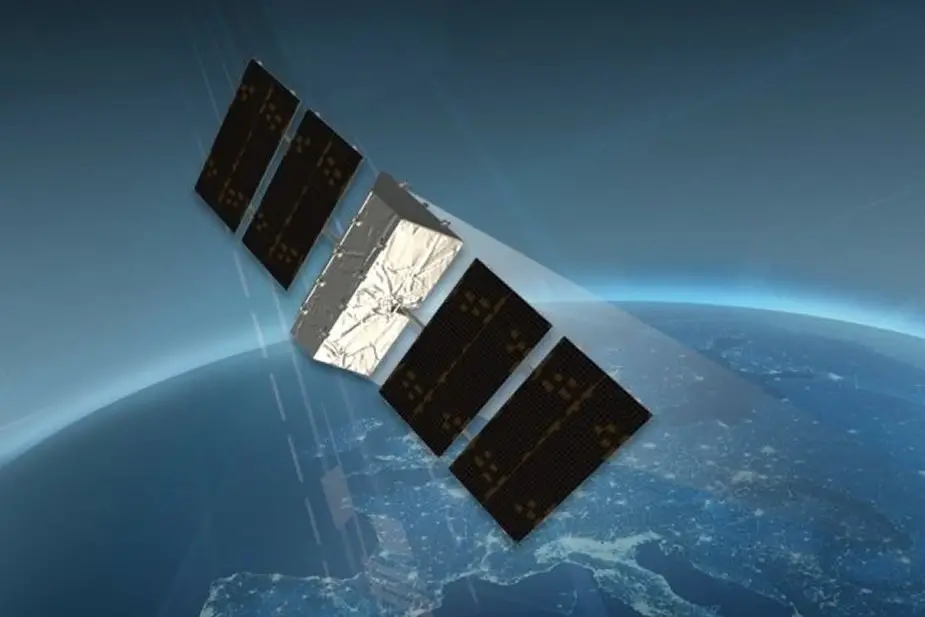The U.S. Space Force’s Space and Missile Systems Center (SMC) at Los Angeles Air Force Base awarded Lockheed Martin a $240 million contract to develop a prototype payload for its new Protected Tactical SATCOM (PTS) system.
 PTS is a next-generation capability connecting warfighters with more agile and jam-resistant satellite communications (Picture source: Lockheed Martin)
PTS is a next-generation capability connecting warfighters with more agile and jam-resistant satellite communications (Picture source: Lockheed Martin)
PTS is a next-generation capability connecting warfighters with more agile and jam-resistant satellite communications (SATCOM). The complete system will deploy a constellation of dedicated geostationary satellites, commercially hosted payloads, and coalition partner satellites integrated through a ground control network to provide U.S. and coalition forces protected communications in a data hungry battlespace.
SMC’s acquisition begins with a rapid prototyping phase for a new mission payload hosting the Protected Tactical Waveform (PTW). The fully-processed payloads will ensure adaptive, anti-jamming communications channels are available to allied forces in a contested environment. SMC is leveraging Other Transaction Authority (OTA) contracting mechanisms rather than a traditional Federal Acquisition Regulation (FAR)-based acquisition for prototyping to provide agile development, “E.P.I.C. Speed,” and an avenue for non-traditional participation. E.P.I.C. Speed is SMC’s acronym for Enterprise, Partnership, Innovation, Culture and Speed.
Lockheed Martin is excited to be in a position to rapidly develop protected SATCOM payload technologies that will benefit the warfighter.
“Teaming with non-traditional hardware and software developers has enabled the Lockheed Martin team to leap frog communications payload capabilities,” said Erik Daehler, Lockheed Martin’s director of Strategic Communications Architectures. “We are able to ‘Go Fast,’ both in technology deployment and contracting structure, due to the nature of the OTA acquisition. Our partnership with the Space Enterprise Consortium (SpEC) has made these non-traditional acquisitions possible.”
“Lockheed Martin understands how important protected communications are to our tactical warfighters deployed downrange. We also know that our SATCOM systems have to evolve to stay ahead of the threats, because a space system that can’t survive Day 1 of a conflict can’t achieve the mission,” said Mike Cacheiro, Lockheed Martin’s vice president for Protected Military SATCOM. “Having delivered the nation’s essential satellite communications systems, we are uniquely positioned to partner with the U.S. Space Force to develop the next generation’s innovative, resilient and modular protected tactical SATCOM architecture.”
Lockheed Martin launched the first commercial protected communications payload on Hellas Sat-4/SaudiGeoSat-1 (HS-4/SGS-1) in 2019, featuring the most advanced digital signal processor and protected communications algorithms available. These technologies along with mission expertise and a partnership with the Space Force will dramatically accelerate PTS to the warfighter.
PTS continues Lockheed Martin’s legacy of developing resilient protected communications for the military that includes both the Advanced Extremely High Frequency (AEHF) and the MILSTAR systems. In 2015, the Air Force awarded the company a contract for Combined Orbital Operations Logistics Sustainment (COOLS), which cost-effectively consolidated the sustainment of the AEHF, MILSTAR and DSCS III constellations in one ground system. In 2019, the COOL\R contract extended that sustainment emphasizing additional resiliency, cyber and mission planning enhancements.
Lockheed Martin has developed and built more than 300 payloads for a variety of missions. The company has more than 50 years of experience as a payload integrator, developing cutting-edge technologies supporting our nation’s critical missions.
















